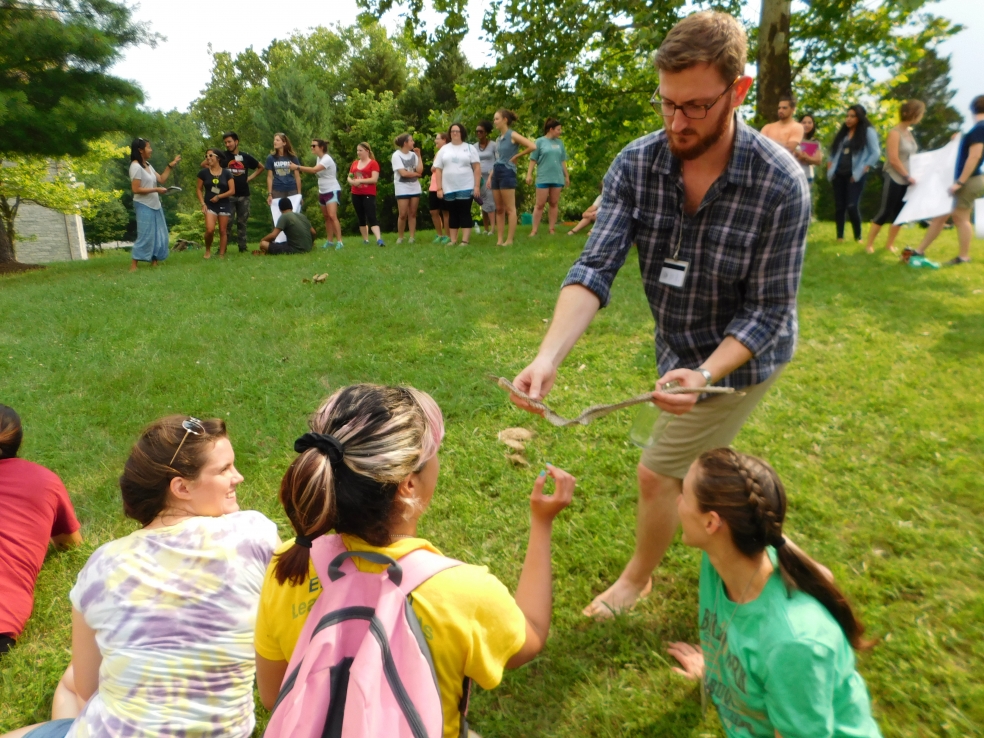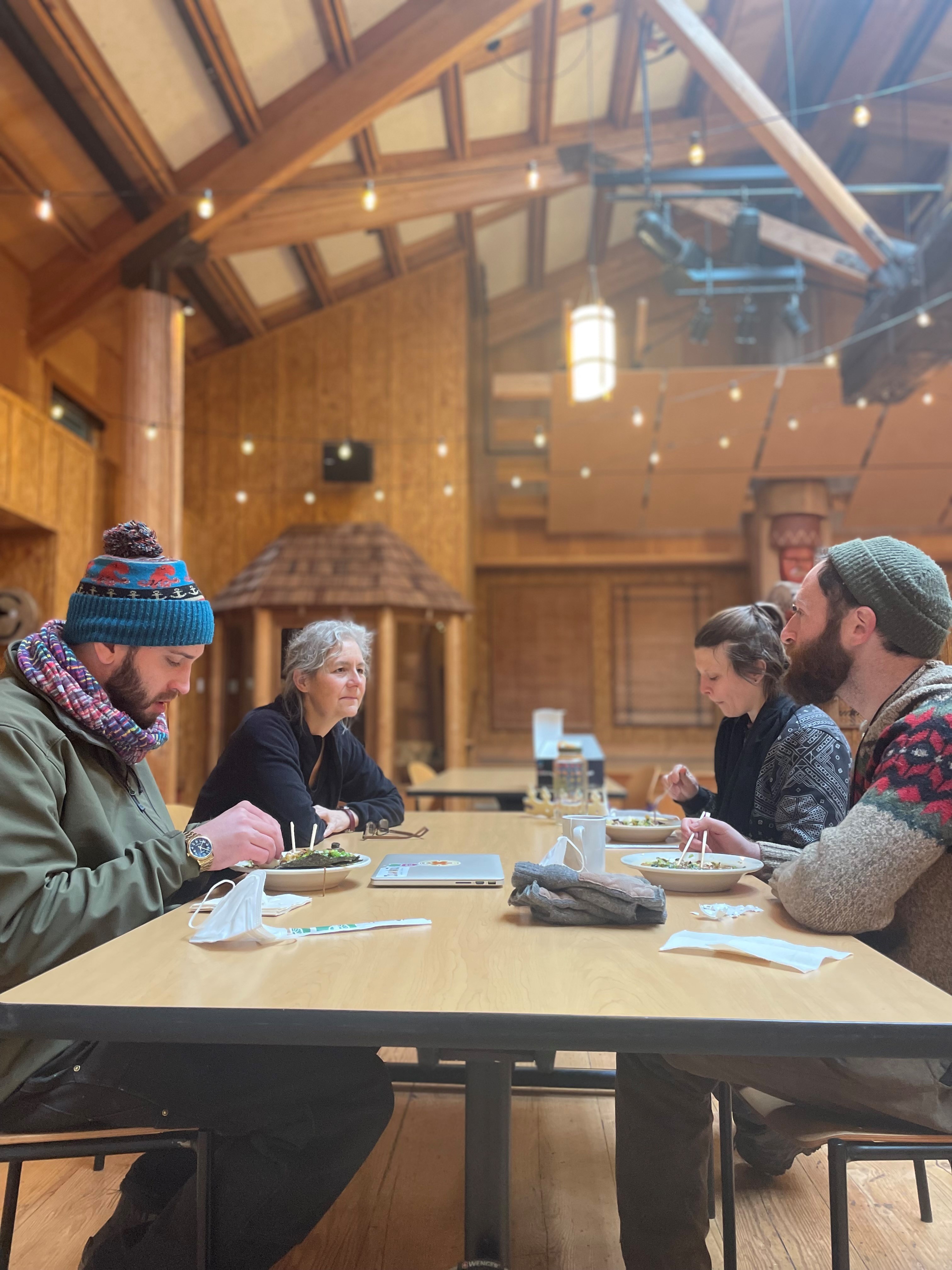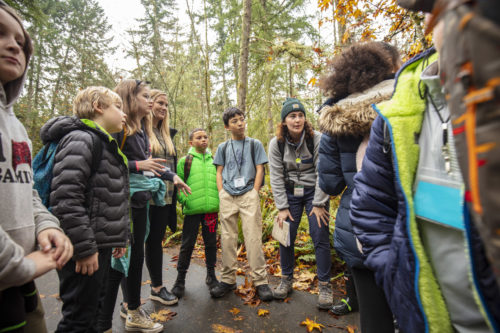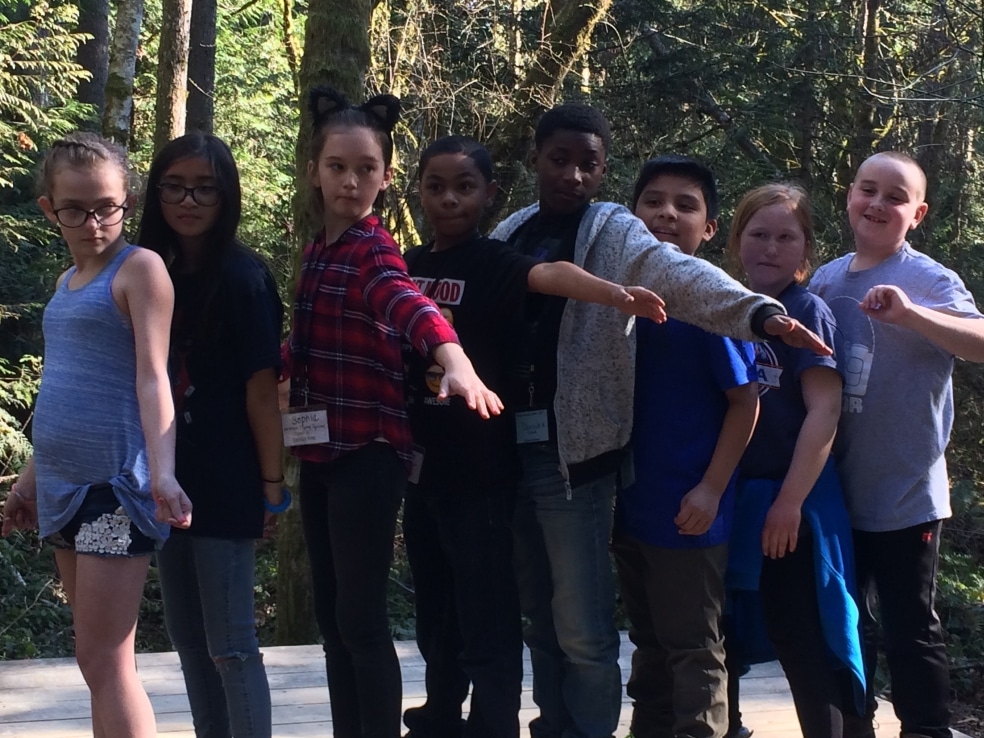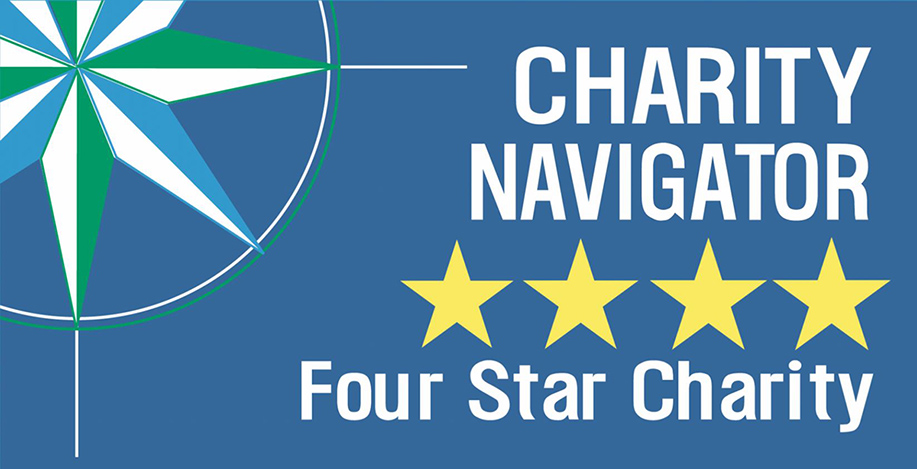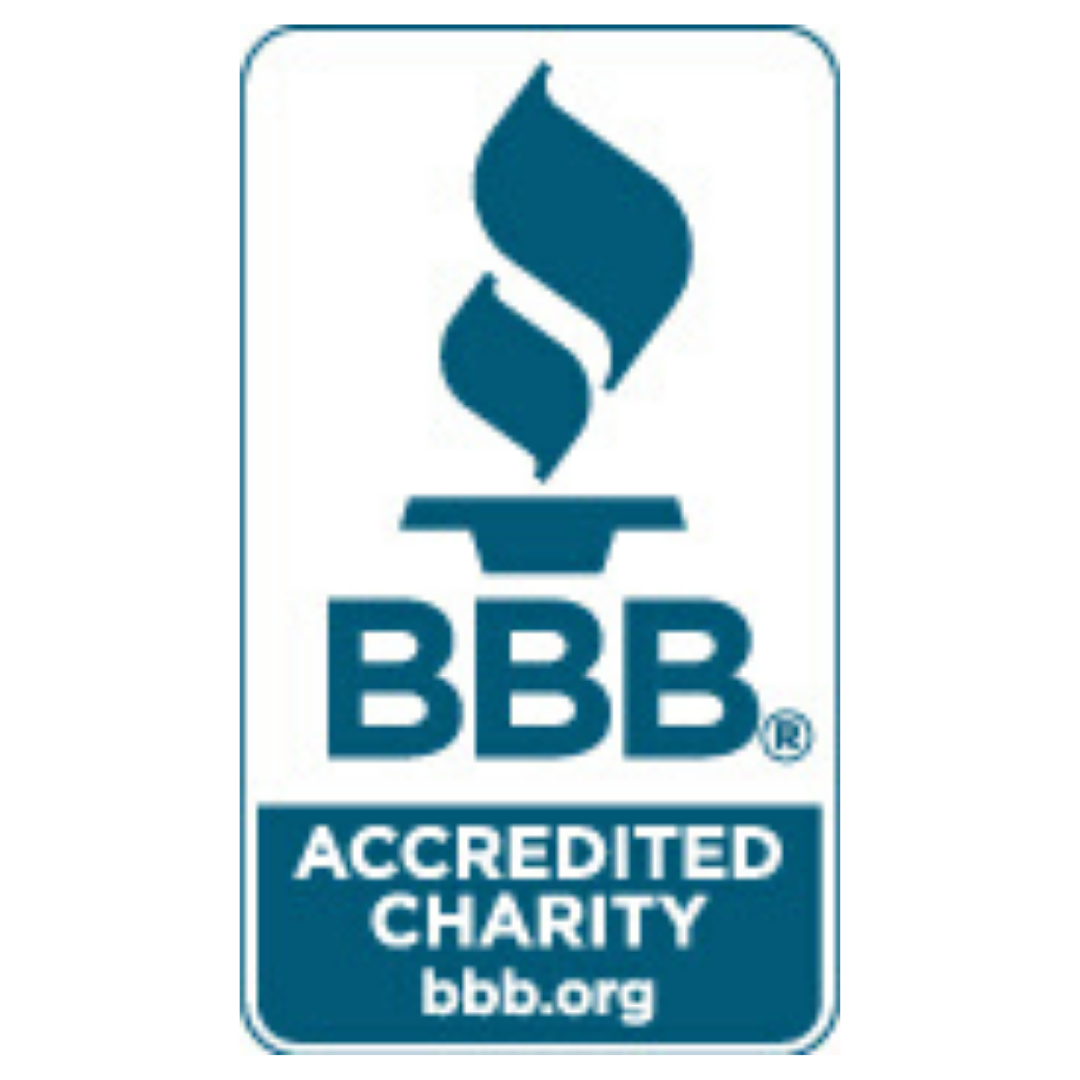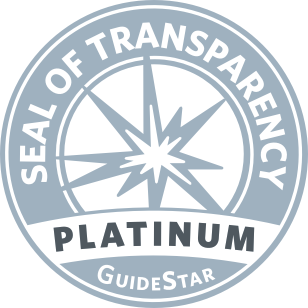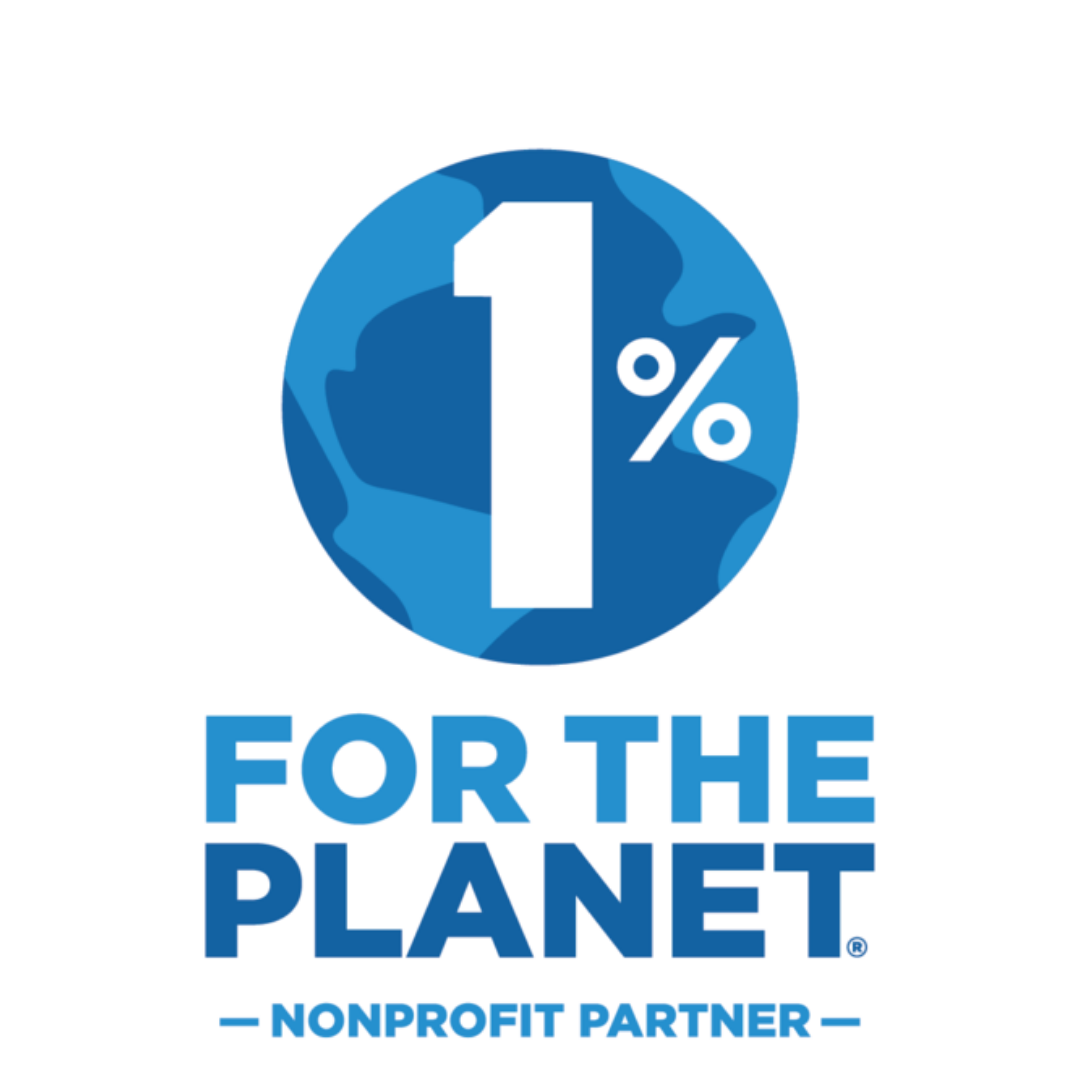The year-long 1:1 relationship of a mentor paired with a grad student offers sustained support…
Author: Ilya Schmulensen
I have a couple of confessions to make.
I willingly left a full-time job in the middle of one of the worst recessions in U.S. history to pursue a graduate degree…and I don’t regret it.
The first time I slept in a tent was when I was already enrolled at IslandWood studying to become an environmental educator.
Prior to starting the program, I had never been to a national park, paddled in a kayak, or rock climbed.
I grew up in Brooklyn, NY, where green spaces along buildings and the tiny patches of dirt surrounding trees were fenced off with signs which warn against entry. The only wildlife I interacted with on a regular basis were squirrels and pigeons.
My journey to become an environmental educator started when I took an undergraduate, inter-semester course on primate behavior and conservation in Costa Rica. At the time, I was incredibly interested in exploring the shared ancestry of monkeys, apes, and humans and I knew that I wanted to travel to as many places in the world as I could. While I spent several weeks recording the movement patterns, feeding frequencies, and population densities of howler and capuchin monkeys on a lush, private sanctuary, a fellow classmate was conducting a different study. She was investigating what the people in the local village thought about the American students spending their days observing monkeys. They wanted to know why the preserve was closed to the locals during classes, why the students didn’t interact with the children in the village on a regular basis, and what was so interesting about those monkeys.
These questions helped articulate a disconnect between the conservation education work that was going on and the immense impact that cross-cultural community building could have had on the village and the American students studying there.
Following this experience and several others in France, western Africa, and Argentina, I knew that I wanted to pursue a life path in which I would harness people’s connection to place and their desire to build community to inspire greater appreciation of the interconnected web in which everything exists.
I felt that in order to do this, I needed to become connected to a natural place, learn how to effectively communicate, and build community. When applying to graduate schools, I was looking for a supportive environment which would provide me with hands-on education, real-life experiences, a supportive network of mentors and peers, and a toolkit to use in my future career. I found IslandWood.
 Today, exactly five years since I completed my Master of Education, I used an activity I learned at IslandWood to lead a group of twelve professionals at an environmental nonprofit in Austin, TX. The activity, called the “Ecosystem Challenge” helped the staff explore the importance of effective communication, community building, and role differentiation in achieving our mission of engaging citizens to build more beautiful communities.
Today, exactly five years since I completed my Master of Education, I used an activity I learned at IslandWood to lead a group of twelve professionals at an environmental nonprofit in Austin, TX. The activity, called the “Ecosystem Challenge” helped the staff explore the importance of effective communication, community building, and role differentiation in achieving our mission of engaging citizens to build more beautiful communities.
Perhaps the most important lesson I learned at IslandWood was that I didn’t need to have a background of sleeping in tents, participating in outdoor recreational sports, or hiking in national parks to be an environmental educator. I just needed to know that I could play a role in connecting people to the environments and communities around them.
Ilya is currently the Deputy Director at Partners for Education, Agriculture, and Sustainability (PEAS) in Austin, TX. Since completing the Education for Environment and Community Graduate Program at IslandWood, he has been the Director of Programs at Keep Austin Beautiful, Director of Operations at a farm-to-table camp in New York, involved with the Children & Nature Network’s Natural Leaders Network, and presented on topics ranging from zero-waste education to integrating technology into environmental education at conferences around the country.

